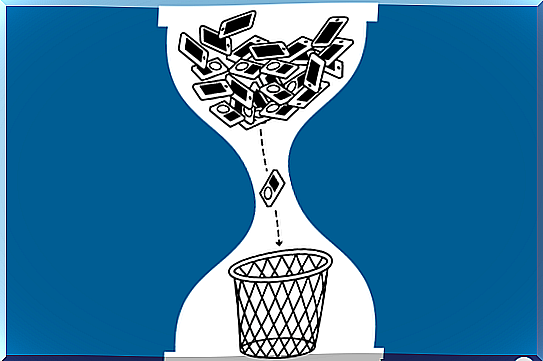Planned Obsolescence And Consumer Manipulation

In 1901, a light bulb was installed in the fire station in Livermore, California (United States). They turned it on and never turned it off again. More than 100 years have passed and the bulb continues to shine like the first day. This bulb is one of the more curious tests of a phenomenon called programmed obsolescence.
What is so special about this bulb? In fact, nothing. It is similar to those created by Thomas Alva Edison in 1881, which lasted 1,500 hours. The century-old bulb is just an improved model. The obvious question is why some technologies once stood up better to the passage of time. Considering that media and technology are supposed to advance, wouldn’t it make sense that we have better light bulbs today and not the other way around?
The case becomes even more mysterious if we look at other modern devices. Old televisions lasted longer than modern ones. The same applies to almost all devices. Why ? There was quite simply a pact , sealed in 1924, which enshrined the planned obsolescence in the world.

What is planned obsolescence?
Planned obsolescence is the practice of limiting the useful life of products, both artificially and deliberately. This means that things are made in such a way that after a while they cease to be of use. It is not that they cannot be made in another way, but rather that the products are made that way in order to generate more consumption.
Light bulbs are not the only example of planned obsolescence. An even more illustrative case is that of nylon stockings for women. In the beginning, they had a durability of more than a year. Currently, they can hardly be put more than twice.
The plot and other forms of obsolescence
There is ample evidence to indicate that a powerful group of industrialists gathered in Geneva (Switzerland) at Christmas in 1924. This group is known as the “Phoebus Cartel”. We know that one of his very first measures was to ban the marketing of an already patented bulb with a durability of more than 100,000 hours. In addition, this group of manufacturers established a pact intended to impose the planned obsolescence on a certain number of additional products.
- Inherent in function : the function of a product is increased so that the consumer is obliged to acquire the following model.
- Inherent in Quality : The product is programmed to stop functioning properly after a certain period of use.
- Inherent in desire : it intervenes in fashion and trends so that a product ceases to be desired, by improving the model or by incorporating details that motivate us to “update ourselves”.
Planned obsolescence is today strongly associated with emotions. Continuous updating is deliberately planned, especially for technological devices. This makes it possible to generate the desire to acquire the latest model, even if it does not bring any major improvement.
Recycling is a form of freedom
Ultimately, this whole consumer system is all about keeping the sales volume high. Planned obsolescence is a strategy to achieve this. The worrying thing is that nowadays people do not even look at the quality or usefulness of the goods. There is a very strong desire to buy constantly.
What was once a form of commercial manipulation has become a popular desire. Individuals have internalized planned obsolescence. They now want to get rid of used items quickly and replace them with new ones. It gives many a feeling of satisfaction, of control, of power.
Faced with these increasingly obvious forms of manipulation, the trend towards recycling has emerged. This approach aims to establish a culture of reuse. The aim is not only to limit unbridled consumerism, but also to protect the environment.
In the background, recycling also has a psychological impact. He favors an attitude centered on recomposition rather than rejection. He admits that things can be imperfect and yet useful and valuable. This, could also be translated into a more constructive and more human stance, in the face of many intangible realities which are also pushed aside when they begin to pose problems.











